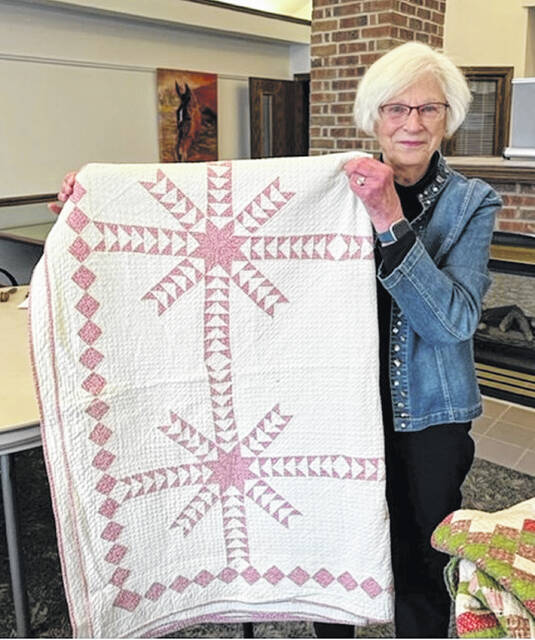
Conversation Club met recently at the Ohio Living Cape May campus.
President Judy Sargent opened the meeting with a quote from Eleanor Roosevelt: “A woman is like a tea bag. You never know how strong she is until she gets into hot water.” It was International Woman’s Day, so the quote was quite appropriate.
The hostess for the day, Sharon Breckel, was thanked. Speaker Mary Ellen Krisher was then introduced. Her program was on the history of quilting. Quilts from her collection were shared to show the different types.
Quilting is stitching three layers of fabric together with the middle filler such as wool. People from cold climates of China and Middle East have used quilting for 5,000 to 6,000 years.
Christian Crusaders to the Holy Land brought quilting back to Europe and Britain in the 12th century.
In Colonial America only wealthy women had time to quilt. They used hand loomed white fabric and white thread to make the stitches. These quilts are whole cloth quilts.
By the 1840s women were able to buy manufactured plain cloth and calico. Women began using scraps leftover from sewing clothing to make quilts. These are called patchwork quilts. Many of the quilt patterns go back to the 1840s.
During the Civil War women made quilts to send to the men fighting and also made quilts to raise money for the Abolition Movement.
The Clinton County History Center has an excellent example of an Abolition Quilt. Squares were made by Rebecca Harvey Hadley and her family in Clinton County. All squares were pink and red flowers appliqued on a white background and all were signed by the maker.
The finished quilt was auctioned with money going to the Abolition Movement. Around 150 years later the Hadley family raised over $3,000 to allow the Clinton County Historical Society to buy it back and bring it back.at an auction.
Woman have made quilts during the wars and Great Depression to keep their loved ones warm. Quilting is now a much admired art form.
Roll call was taken with 10 members telling their favorite bird.
The club is making a donation to the Hope House. A club tradition is that the group read a selected book and discusses it together each April. The book selected this year was “Race Against Time” by Jerry Mitchell. This is also the Clinton County Reads selection.
The next meeting on March 22 will be at Cape May. Marla Stewart is in charge of the program. Her daughter will present her topic E.A. Pope. Suzanne Madison will be the hostess.
St. Patrick’s Day themed refreshments were served by the hostess.


